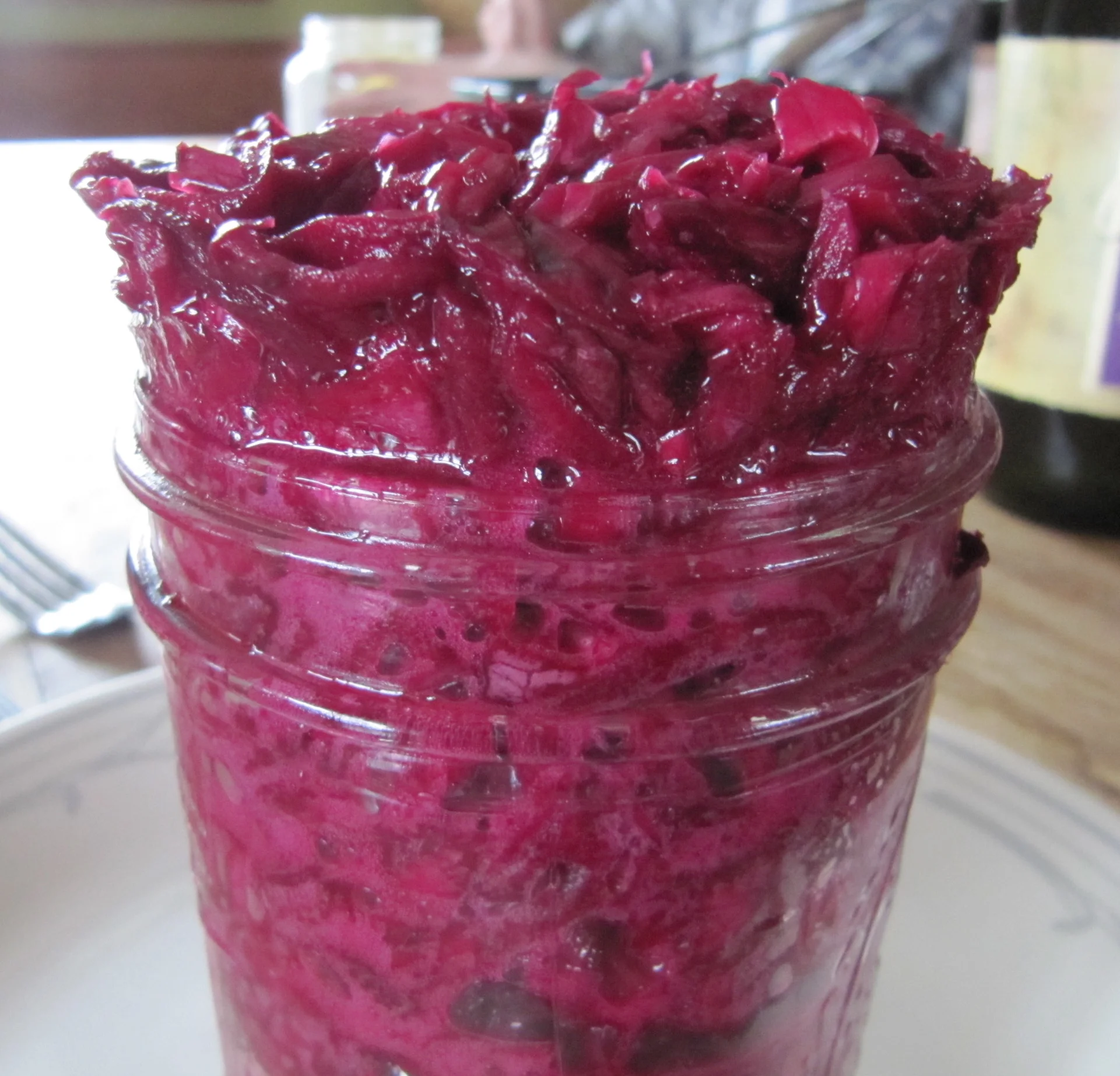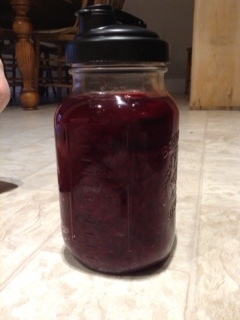Greetings!!
I followed the book “fermented vegetables” and it seemed my ferment was ready at five days.
I didn’t want it too sour/“nasty” (my husband and a dear friend were skeptical at letting it sit too long) so i tasted it and jarred it up. it’s in the fridge. My first kraut. Naked kraut.
Do you think I rushed it?
We keep our house at 65F year round and i had this in a crock in my sewing room above our boiler room.
Thank you!!!!***********************
Hi there,
Congratulations on your first Naked Kraut. Sorry for the slowish response. We have been traveling a lot. These look great. I am guessing you are enjoying them by now. As soon as the kraut smells pickley then it is technically done. As the time increases it just gets more sour. The only reason to let it go more is that it will continue to process the carbohydrates and “predigest” them for you. That said these younger ferments are super tasty and still good for you.
Enjoy,
Kirsten
Cabbage Leaves Blackening?
Hi.
I am making sour cabbage leaves for cabbage rolls and using old Baba recipe which is very loosely-goose as to amount of salt and water. Smells like they are fermenting but outer leaves appear to be blackening! Yikes! Why? And are they still salvageable?
Thanks, Kathy
*********************
HI Kathy,
These look okay to me, I don’t see they “blackening” but I do see the deep color I think you are referring to, this is just the color that the greener outer leaves get. Think of the color of an olive or dill pickle. Green turns that army style green.
I think as long as you keep them submerged until they are fully fermented they will be fine.
I hope that helps,
Kirsten
Mold on top of fermentation bag
Hello Kirsten,
I am making my first batch of fermented pickles. The recipe I used had me place a ziplock bag on the top to weigh down the brine. It now is covered in mold. If I remove the bag carefully will the pickles below still be okay?!
Thank you,
Adrienne
***************************************
Hi Adrienne,
The bag is doing its job and keeping the mold off of your ferment. Everything below the brine is fine and I don’t see where the mold has even gotten past the bag.
Just remove the mold carefully, then the bag carefully and you should be golden.
They look great!
Kirsten
Thick Sticky Beet Brine
Hello Kirsten.
The brine on my beets is very thick and slimy.
They did not bubble very much for the three days I had them fermenting.
I wonder if I packed them too much?
And if they are safe to eat.
They are crispy and do taste OK but I'm worried. This is my first attempt at fermenting.
My thanks for this help.
Merilyn
__________
Hi Merilyn,
Beet brine is very thick and viscous because beets have so much sugar. The other thing is that 3 days isn’t very long for a ferment like this and sometimes there is a thick slimy phase in fermentation that will work itself out. The picture I am sending is a ferment that is fine but went through this slimy phase. It happens sometimes.
I think you are fine and that they are very safe. The important thing to remember is that if they are bad (as in unsafe) they will be awful smelling and tasting too.
I would let them ferment a little longer and realize beets are also just like that to a point. I hope that helps.
Cheers,
Kirsten
This sauerkraut was fine, it smelled good and had no scum. The problem was the viscous brine. It was quite unappealing. This happened because the ferment had been fermenting very slowly at temperatures in the low 50° F range. We advised the maker of this kraut to move it into a warmer space and ferment it longer and Violá it worked! The kraut was perfect in a few days.
Can I still eat this sauerkraut?
Question :: When I pulled this beet sauerkraut out of the back of my refrigerator I found this this white growth on top. Is it still safe to eat? — Jane, CA
Answer :: It looks like you have two things happening on the top of the sauerkraut. The first is kahm yeast which is harmless but it makes the flavor quite "yeasty". The other issue appears to be mold. This is something you do not want to eat. Both of these things happen with the exposure to air and can be avoided by pressing your sauerkraut under the brine before storage. Also always use clean utensils.
Because of the condensation on the container it is difficult to see the sauerkraut that is under the affected area. It appears there are air bubbles throughout the kraut. If this is the case the entire batch may have been exposed to air in which case the molds and yeasts can move throughout the kraut. This sadly means it must move on to the compost pile.
When you are faced with a sauerkraut that has something undesirable on top you do not always need to throw the whole thing away. Often it is just the top layer and maybe the first inch of sauerkraut that must be composted. Everything under the brine is anaerobic and safe to eat.
The best thing to understand is if it is bad you will know it is bad. Flavor, color, smell—all your senses will let you know.
At the fermentation school Kirsten offers a simple Learn to Ferment Sauerkraut and Pickles class for $16, Learn to Make Fermented Hot Sauces for $35, a Mastering Fermented Vegetables for $78 and a special bundle of the last two for a discounted price of $93.













